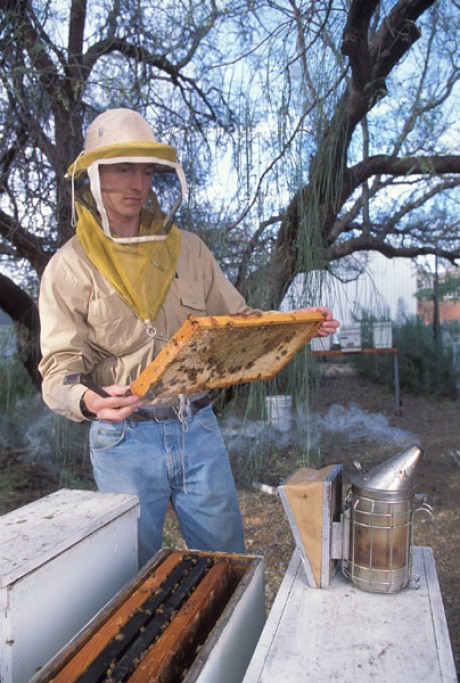Keeping Honey Bees Abuzz
You can help protect and proliferate these essential insects
Honey bees have been supplying honey for the human race since the Stone Age. Today, there is great concern that their benefits to the world will be diminished, if not lost.
Honey bees provide us not just with honey, but also with beeswax, propolis (a bee glue used in cosmetics and health supplements) and pollination services.
Though several species of honey bees exist, only one species (Apis mellifera) is used extensively for domestic honey production and pollination. An average well-managed domestic hive will contain some 50,000 bees (sometimes as high as 80,000) during the peak of mid-summer. Bees from that one hive can gather up to 80 pounds of pollen in a year, and produce well in excess of 100 pounds of honey annually.
Honey bee species generally visit flowers to collect pollen, their source of protein, and in the process they are responsible for an estimated 80 percent of all insect pollination. Without this pollination, many commercial and home-grown food crops would be greatly reduced.
In 2007 honey bees made the news because a disturbing number (30 to 70 percent) of North American European honey bee hives collapsed. This sudden and unprecedented decline was named colony collapse disorder (CCD). So far researchers have not found a specific cause of CCD, though many scientists suspect it is caused by a combination of factors rather than a single pathogen or poison. Those factors may be loss of habitat, changes in agricultural practices, new viruses and pathogens and extreme weather during the past decade that resulted in impaired protein (pollen) production.
A decline in beekeeping, another contributing factor, has been taking place since the 1950s, according to Tim Tucker, a member of the American Beekeeping Federation's Membership and Marketing Committee.
"For many years the cause of decline was economic in nature and was tied to the availability of other sweeteners on the market," he said. Access to inexpensive sugar and high fructose corn sugar (HFCS) changed consumers' habits, causing many to stop using honey as a home sweetener, he explained.
Compounding that problem are the bees' health issues with new parasitic mites and viruses, which has increased the cost of keeping bees alive.
Protective plantings
Homeowners can take steps to help protect these amazing and economically important creatures, Tucker says. "The main thing homeowners can do is provide plantings of beneficial flowers that bloom during the full season to provide nectar for honey bees and all native pollinators," he said.
"The second thing that can be done is to educate the public to accept a lower level of perfection in their yards and gardens and use less herbicides and pesticides that can affect pollinators," he continued. "It is not a good thing to treat our lawns to remove clovers and even dandelions that provide nectar to bees. While it makes for a less perfect-looking lawn, it is more natural and beneficial to the bees."
Homeowners can also help by providing locations for beekeepers to place bees, especially on the outskirts of towns and suburban environments but also in the countryside, said Tucker. He says that white clovers are wonderful additions, as are shrubs such as spirea, currents, blackberries, blueberries and honeysuckle. Beneficial trees include all fruit-producing trees and ornamental trees such as Bradford pears and black locusts.
Source: Tim Tucker, a member of the American Beekeeping Federation (www.abfnet.org) and editor of ABF's E-Buzz newsletter, wrote this article.
-
Share this story:



